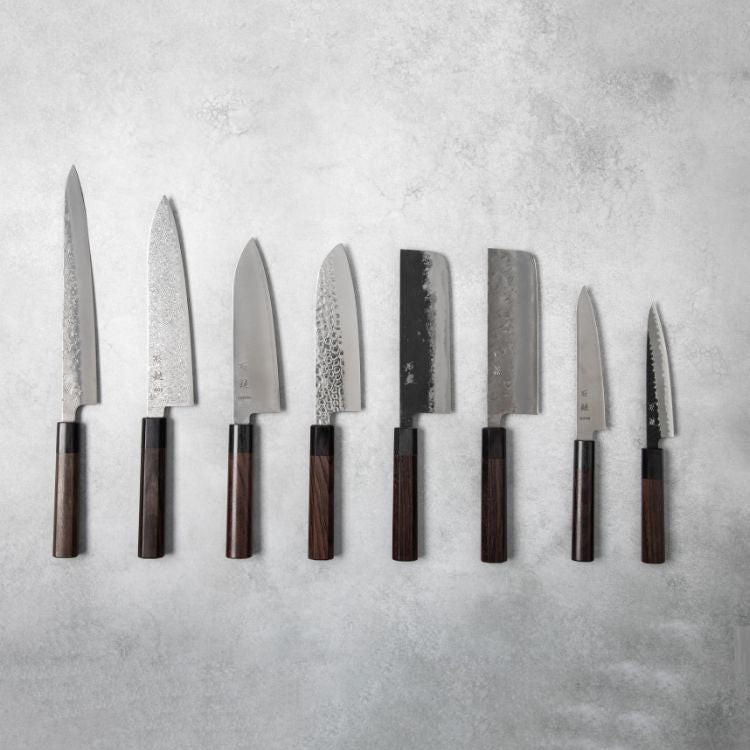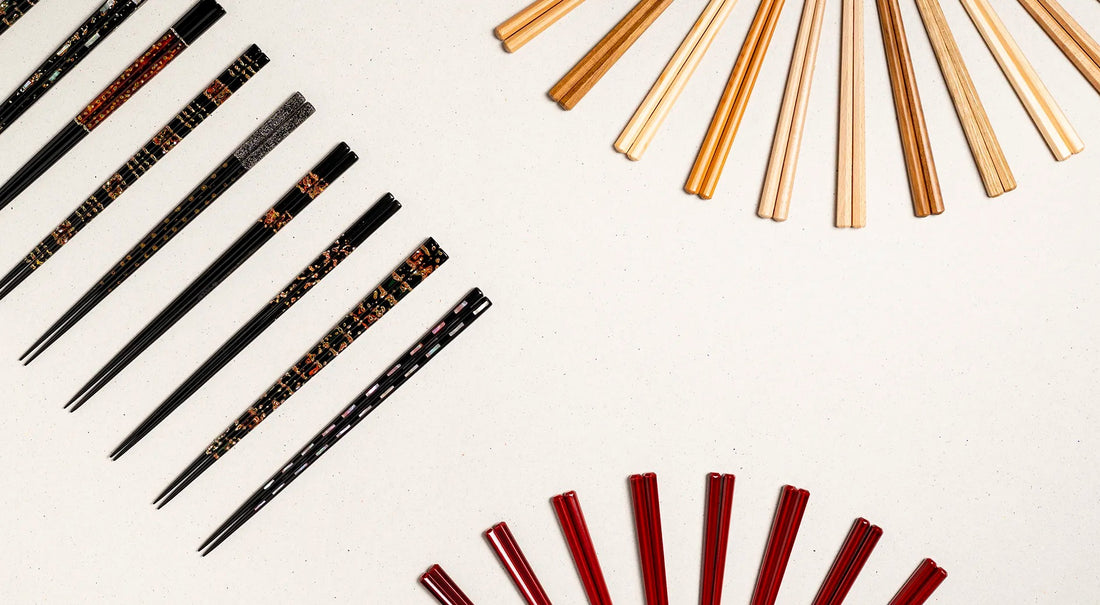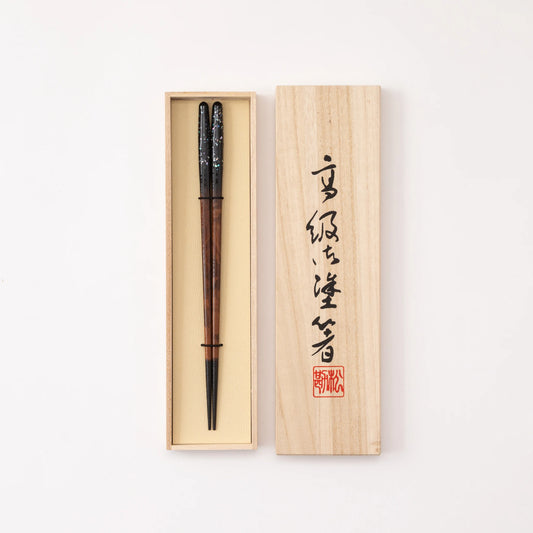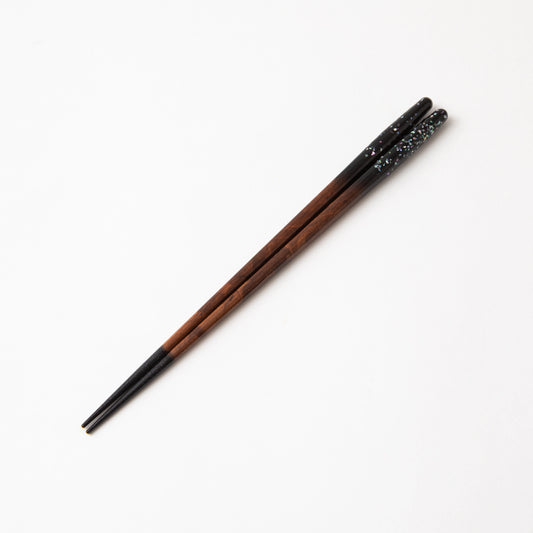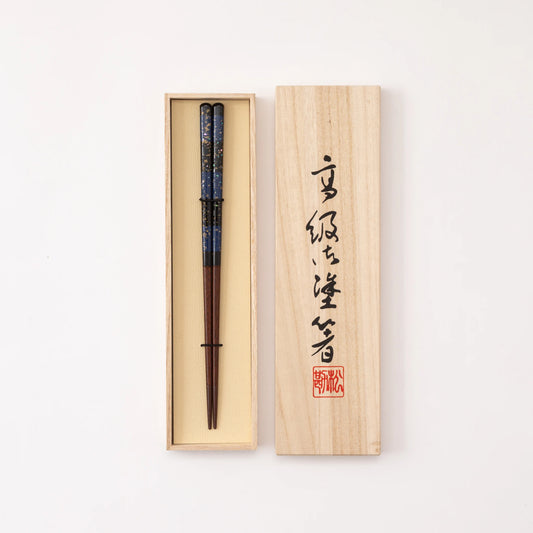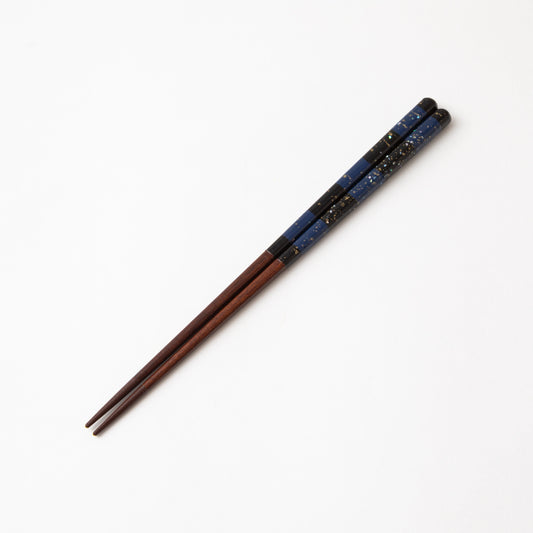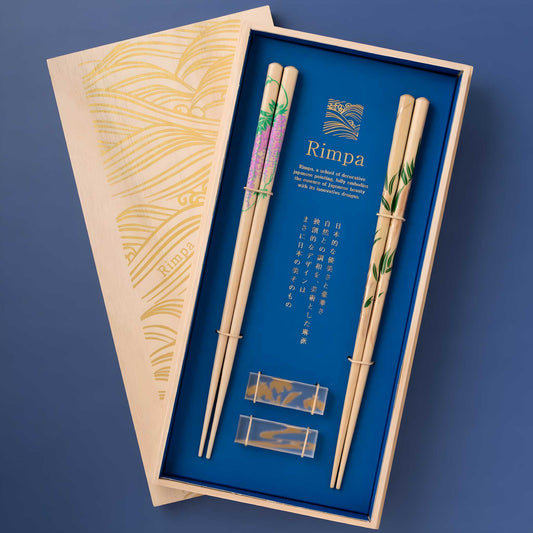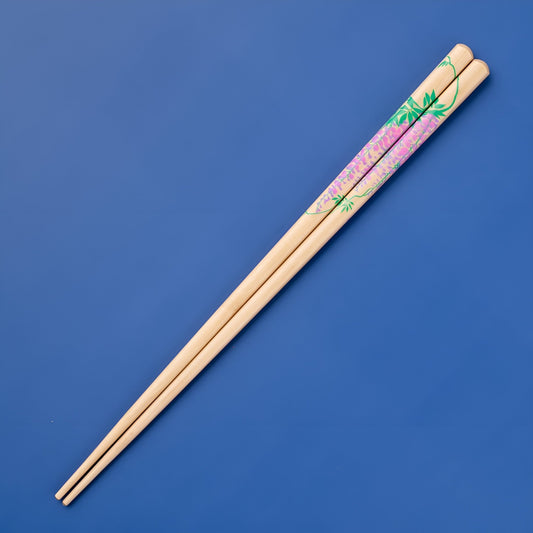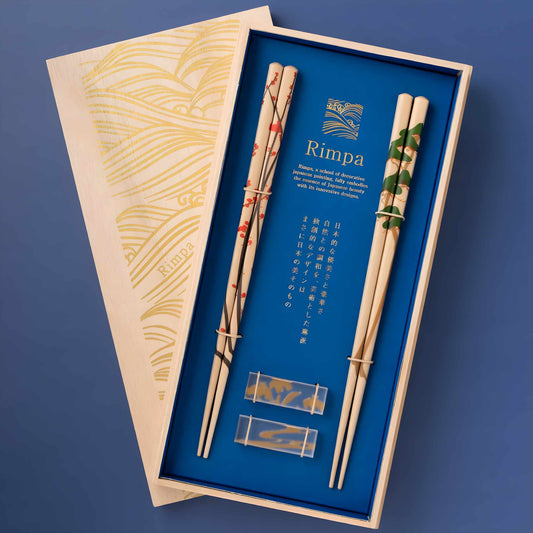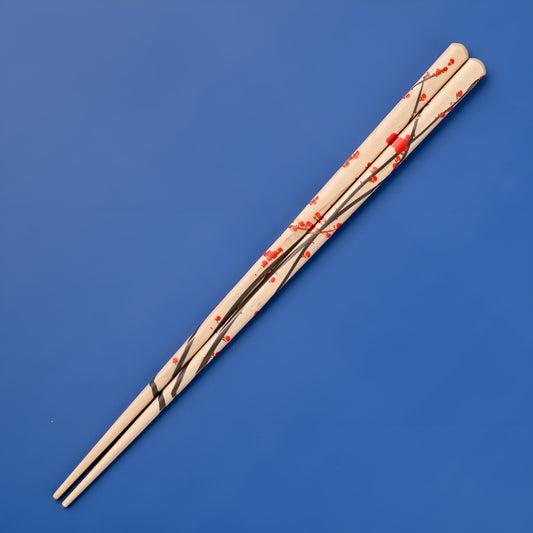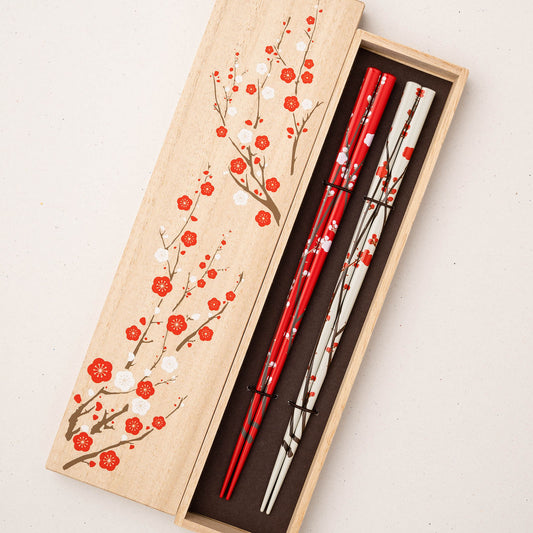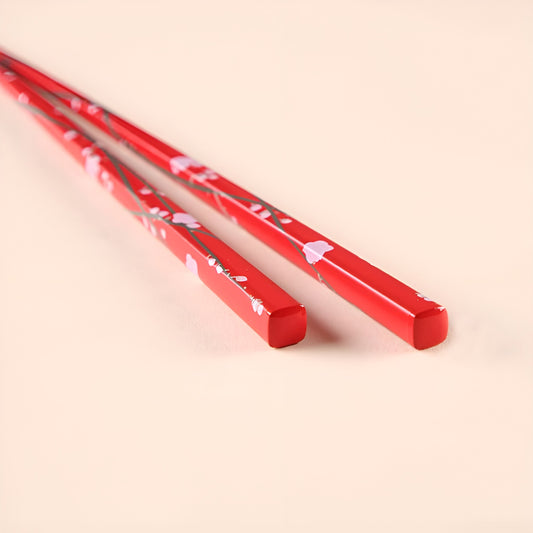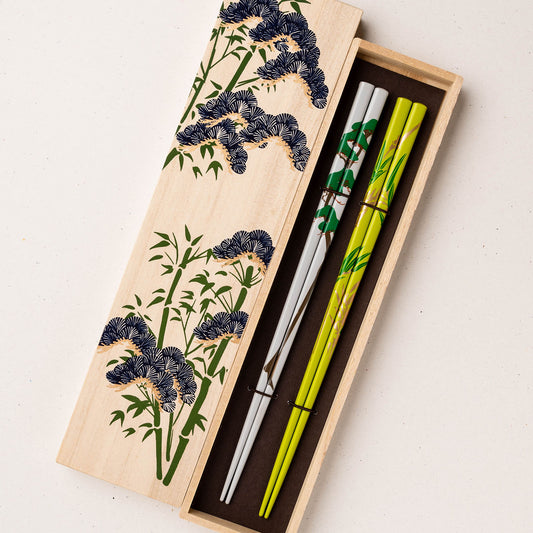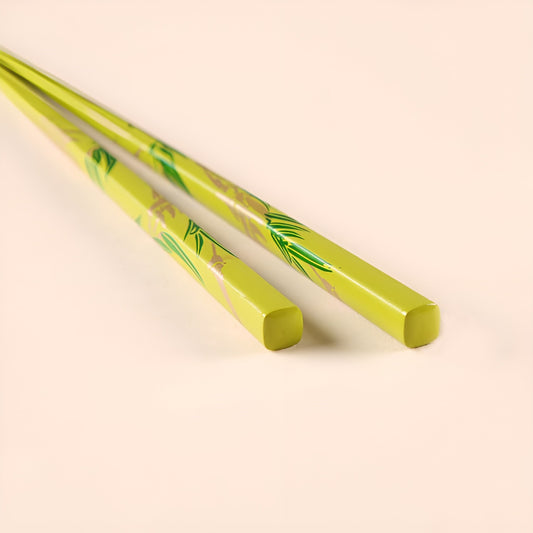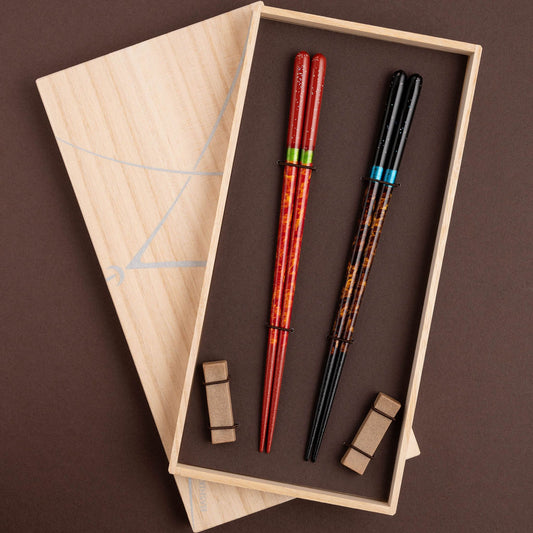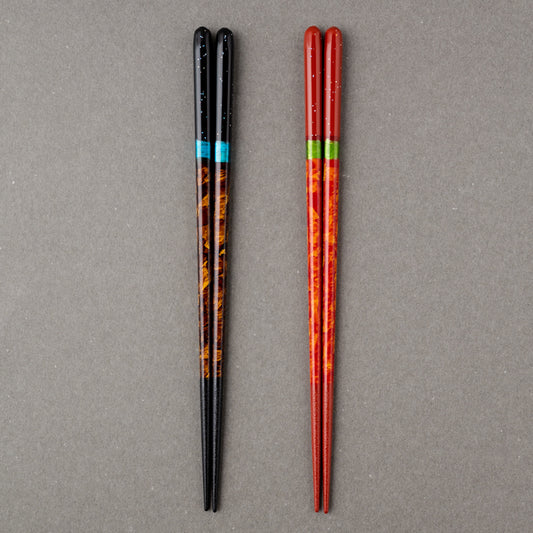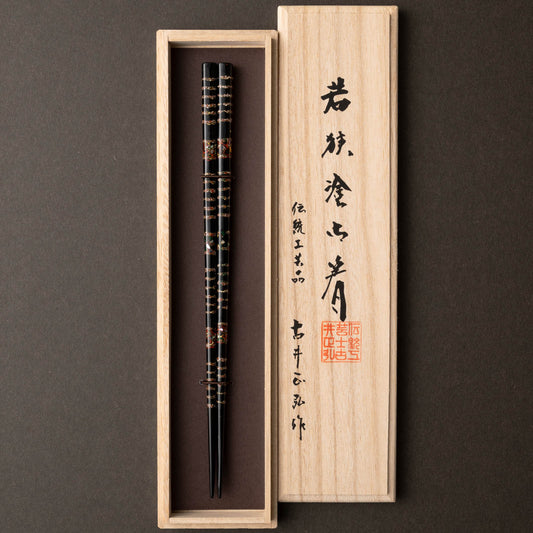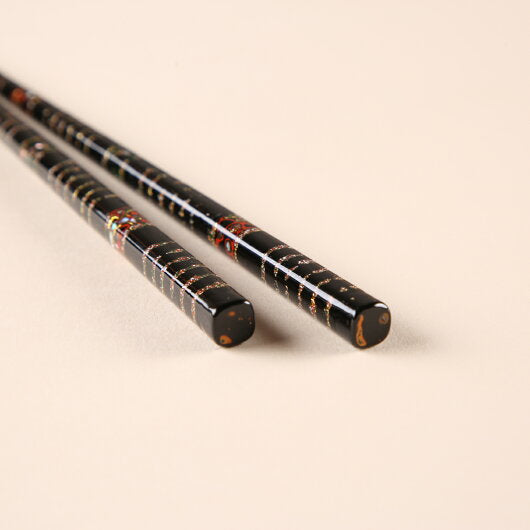Step back in time and discover the captivating story of Obama City in Fukui Prefecture. This enchanting place has long been hailed as a hub for chopstick production in Japan, with a remarkable 70% of the nation's lacquered chopsticks originating from its skilled artisans. Our article takes you on a journey to Sakai, where Matsukan, a revered chopstick maker, showcases their unwavering commitment to tradition and excellence.
Immersed in the enchanting neighborhood of Kitashioya, Obama, Matsukan has dedicated itself to mastering the craft of crafting flawless chopsticks for more than a hundred years. Join us on an extraordinary expedition as we delve into the rich heritage of this esteemed brand, unveiling the captivating tales of its past, the intricate skills employed, and the sheer artistic brilliance that breathes life into every Matsukan creation.
Contents
- 1. History of Lacquered Chopsticks
- 2. Matsukan Chopsticks Unveiled
- 3. Chopstick Craftsmanship, Techniques, and Products
- 4. OMAKASE Product Recommendations
- 5. Importance of Chopsticks as Gifts
- In Conclusion
1. History of Lacquered Chopsticks

For centuries, Fukui Prefecture has been at the forefront of chopstick production, playing a crucial role in Japanese history by crafting exceptional chopsticks. The renowned chopsticks from Wakasa Bay, along with the exquisite art of 'Wakasa paint,' have been treasured for almost four centuries. This region has played a pivotal role in shaping Japan's rich tradition, where chopsticks have become an inseparable part of Japanese culture.
Origins of Wakasa Chopsticks

Wakasa lacquered chopsticks trace their origins to the Fukui Prefecture in Japan, renowned for its traditional lacquerware craftsmanship. The art of Wakasa-nuri, or Wakasa lacquerware, has deep historical roots dating back to the Edo period. Local artisans meticulously apply multiple layers of lacquer infused with natural ingredients, such as the sap of the Japanese lacquer tree, to create a durable, glossy finish.
This time-honored technique results in chopsticks that not only showcase exquisite aesthetics but also boast a smooth, comfortable feel in the hand. The intricate designs and vibrant colors reflect the region's rich cultural heritage, making Wakasa lacquered chopsticks a symbol of traditional Japanese craftsmanship and artistry.
Obama in the Edo Period

In the Edo era, Obama City in Fukui Prefecture played a pivotal role in the flourishing craftsmanship of chopstick production in Japan. The city, nestled along the scenic Wakasa Bay, became a prominent hub for lacquerware artisans, specializing in the intricate art of Wakasa-nuri.
This traditional lacquerware technique involved meticulously layering natural lacquer derived from the Japanese lacquer tree onto chopsticks, creating a durable and aesthetically pleasing finish. Obama City's chopstick production thrived due to its proximity to abundant forests providing quality materials for crafting these utensils. The combination of skilled artisans, locally sourced materials, and the city's strategic location contributed to establishing Obama City as a significant center for the artistry and craftsmanship of Japanese chopstick production during the Edo era.
Importance of Chopsticks throughout History

The history of chopsticks in Japan dates back to ancient times, with their introduction believed to have occurred during the Nara period (710-794) through cultural exchanges with China and Korea. Initially, chopsticks were considered a luxury item used primarily by the elite class in Japan. As time progressed, chopsticks became more widely adopted across different social classes.
During the Heian period (794-1185), the use of chopsticks gradually spread among the general population. This era witnessed a shift in culinary practices, with the emergence of the kaiseki dining style, emphasizing multiple courses and intricate presentations. Chopsticks became an integral part of this refined dining experience.

In subsequent centuries, particularly during the Edo period (1603-1868), chopstick usage became more standardized. The simplicity of chopsticks appealed to the Japanese aesthetic, aligning with the minimalist principles of traditional Japanese design. As urbanization and cultural exchange increased, chopsticks evolved in both form and material. Different regions developed their unique styles, and various materials, such as wood, lacquer, and metal, were employed in chopstick production.
Chopstick Day and their Ties to Spirituality

Chopstick ceremonies take place at Hie Shrine in Akasaka, Tokyo, as well as in various other regions dedicated to the art of chopsticks throughout Japan. In Obama City, where Matsukan is situated, a special ceremony is held to honor the offering of chopsticks. These memorial services serve as a heartfelt expression of appreciation for the humble utensils that accompany us during our daily meals. As part of the ritual, participants savor a bowl of rice using their newly acquired chopsticks, embracing a sense of rejuvenation and gratitude. While Chopstick Day may seem like a playful concept, it presents a wonderful opportunity to reflect upon the significance of these slender tools that grace our dining tables.
During the Yayoi period, chopsticks made their way to Japan, believed to have been brought along with an agricultural culture. Before that, people relied on hunting, fishing, and cultivating grains like millet and Japanese millet for sustenance, which they consumed using their hands. While it is documented that chopsticks were introduced to the farming culture, they were initially used as ceremonial utensils for offering food to the gods upon their arrival in Japan. These gods were the deities of rice fields, a powerful force of nature that humans couldn't resist. They bestowed upon us the blessings of life.

The New Year and cherry blossom viewing ceremonies were originally held to invite these rice paddy gods from the mountains and entertain them. Imagining the efforts of people in the past, striving to please the unseen 'gods of the rice paddies', it's fascinating to think how rice liberated them from the constraints of life. Chopsticks play an essential role in treating the gods to a grand feast, serving as a connection between the divine and humanity. It was believed that by dining with chopsticks alongside the gods, their power could be absorbed by humans, a practice known as Shinjin kyoshoku or Communal Dining. Even today, the culture of Communal Dining remains a familiar part of our daily lives.
Ryokuchi chopsticks, with their delicate ends on both sides, hold a significant presence during auspicious occasions like New Year's, weddings, and weaning ceremonies. The slender design serves a purpose - one end for us, and the other for the gods to partake in the rice. It may seem grandiose to speak of divine power, but at its core, it symbolizes the life force we receive to thrive. Chopsticks, not just the double-necked variety, are vessels that carry the sustenance keeping us alive. The act of using chopsticks encompasses profound sentiments and aspirations beyond my comprehension. It embodies reverence, gratitude, the sheer delight of savoring a meal, and the sheer joy of existence. While many cultural practices fade away with time, chopsticks endure.
Chopsticks in Modern-Day Japan

In modern times, chopsticks continue to hold cultural significance in Japan. The country has embraced various chopstick styles, lengths, and materials, reflecting diverse preferences and regional traditions. Today, chopsticks are an essential utensil in Japanese cuisine, symbolizing practicality and cultural heritage.
Once considered a necessity for three meals a day, 365 days a year, chopsticks have undergone a subtle transformation. While they may no longer be carried around for every meal, the idea of having a personal item that remains with you at all times is truly wonderful. Matsukan firmly believes that chopsticks should be more than just utensils; they should provide comfort and become an integral part of your daily routine. Just like plates and cups, using chopsticks for every meal fosters a sense of familiarity and brings a soothing touch to your dining experience.
2. Matsukan Chopsticks Unveiled

In 1922, the roots of Matsukan were planted when Matsumoto Tsurunosuke and Kiku established the first iteration of the company. As Japan entered the tumultuous period of World War II in 1943, Matsukan contributed to the national cause by engaging in the manufacturing of chopsticks for the Japanese Navy (union). A turning point arrived in 1962 when Kichiji Matsumoto assumed the role of the second president, marking a period of leadership transition.
The organizational landscape evolved further in 1967 with the establishment of Matsukan Co., Ltd., solidifying the company's identity. Matsukan expanded its presence beyond Fukui Prefecture and opened a Tokyo sales office in Yanaka, Taito-ku, in 1970, enhancing its accessibility to a wider audience. Notably, in 1996, Matsukan secured the "Chopsticks" trademark registration, a testament to its commitment to quality and craftsmanship.

The dawn of a new millennium saw Kiyoji Matsumoto taking the reins as the third president in 2000, ushering in a period of continued growth and innovation. Matsukan's commitment to excellence materialized with the completion of a new head office building in 1998, showcasing the architectural prowess of Yoshiji Takehara from the Muyu Architectural Workshop.
Matsukan continued to evolve with the establishment of a new factory in Kuchinada, Obama City, in 2014, demonstrating its dedication to craftsmanship and regional development. The Tokyo office underwent a relocation to Hisamatsucho in 2017, coinciding with the initiation of wood pellet manufacturing as part of a biomass business.

The year 2021 marked a significant chapter in Matsukan's history as Hironori Matsumoto assumed the role of the fourth president. This milestone coincided with the inauguration of the head office "GOSHOEN" (formerly Furukawaya Bettei), symbolizing Matsukan's commitment to heritage and tradition.
Finally, in 2022, Matsukan celebrated its remarkable 100th Anniversary with a special ceremony, a testament to its enduring legacy of crafting Wakasa Lacquer Chopsticks and contributing to the rich tapestry of Fukui Prefecture's cultural heritage.
3. Chopstick Craftsmanship, Techniques, and Products

In the realm of Japanese chopstick craftsmanship, the Wakasa region, particularly known for its production of Wakasa lacquer chopsticks, stands as a beacon of tradition and artistry. Craftsmanship in Wakasa is deeply rooted in centuries-old techniques, with artisans meticulously honing their skills to create exquisite chopsticks that seamlessly blend functionality and aesthetic appeal.
One distinctive feature of Wakasa lacquer chopsticks lies in the meticulous process of applying layers of lacquer to the wooden base. This technique not only enhances the durability of the chopsticks but also allows artisans to create intricate designs and patterns. The lacquer serves a dual purpose, providing a protective coating while showcasing the artistic flair of the craftsman. In addition to this, Matsukan artisans have broken from the mold to incorporate beautiful painting techniques to both innovate and expand their stunning array of chopsticks.

The crafting of Wakasa lacquer chopsticks involves a harmonious marriage of traditional techniques and contemporary design. Artisans often draw inspiration from nature, incorporating motifs such as waves, cherry blossoms, or delicate landscapes. The result is a pair of chopsticks that not only serve a practical purpose but also tell a visual story, reflecting the cultural and natural influences of the Wakasa region.
Additionally, the meticulous attention to detail in the finishing process distinguishes Wakasa lacquer chopsticks from other varieties. The artisans employ polishing techniques that bring out the natural luster of the lacquer, creating a smooth and tactile surface. This dedication to perfection ensures that each pair of chopsticks is not just a utensil but a work of art that elevates the dining experience.

The craft of Wakasa lacquer chopsticks has transcended generations, with artisans passing down their expertise from master to apprentice - Matsukan being no exception. This continuity of knowledge ensures that the traditional techniques remain intact while allowing room for innovation and adaptation to contemporary tastes. Wakasa lacquer chopsticks, with their rich heritage and timeless elegance, epitomize the marriage of craftsmanship and culture in the Japanese culinary tradition.
4. OMAKASE Product Recommendations
Matsukan's main focus lies in capturing the sheer excitement that chopstick users experience. They gather this excitement from skilled artisans who pour their heart and soul into their craft. Their dedicated team is brimming with enthusiasm, infusing it into every aspect of their work. This excitement radiates from their charming town, creating an atmosphere of pure delight. Matsukan's mission goes beyond creating chopsticks; they strive to explore the limitless possibilities of this essential element on the Japanese dining table. Here are our recommendations for some of their most exceptional chopsticks.
1. Chopstick Pair (Yozora & Akatsuki) Paulownia Gift Box w/ Chopstick Holder
Prepare to be enchanted by the sheer artistry of the Yozora & Akatsuki chopsticks. Each pair is painstakingly hand-painted, depicting a breathtaking "Night Sky" design that is truly awe-inspiring. The handle is adorned with glimmering specks of glitter, while the delicate blue lines add a touch of elegance.
These opulent chopsticks are thoughtfully presented in a meticulously crafted Paulownia Gift Box, accompanied by extra chopstick rests. Whether you're seeking a gift for a special couple or a luxurious decorative item for admirers of Japanese culture, this set is an absolute treasure.
2. Kokko Wakasa Lacquer Chopsticks and Paulownia Gift Box
Introducing 'Kokko' - a set of exquisite and timeless Wakasa lacquered chopsticks. These chopsticks are meticulously crafted with eggshell, vermilion lacquer, green and gold leaf, and mother-of-pearl inlay, accentuating three thicker lines. With their elegance and glamour, these chopsticks exemplify the captivating beauty of Wakasa lacquerware's rich tradition.
To enhance their allure, these stunning chopsticks are elegantly presented in a luxurious Paulownia box. Whether they are intended for use or to be displayed as a decorative piece in the home, they make for a remarkable gift on any special occasion.
3. KUTANI SEAL Floral Chopsticks with Chopstick Rest (Bamboo / Take)
Last but certainly not least, unveiling the KUTANI SEAL chopsticks, a true embodiment of luxury and accessibility in Kutani ware. Experience the seamless fusion of two chopsticks, creating an enchanting pattern that hides a delightful surprise on the reverse side. Meticulously crafted from white maple wood, these chopstick rests elegantly enhance the silk-screened motifs, elevating your dining experience with a touch of refinement.
Let the central theme of Japanese flora and fauna, particularly the quintessential Japanese Bamboo, captivate your senses as you indulge in the intricate beauty of these chopsticks.
5. Importance of Chopsticks as Gifts

In Japan, the act of gifting chopsticks holds profound cultural significance, transcending the mere exchange of utensils. Offering a pair of chopsticks symbolizes the extension of good wishes and harmony, making it a gesture deeply rooted in tradition. The choice of chopsticks as a gift often reflects consideration for the recipient's personal taste and preferences, demonstrating a thoughtful understanding of their dining habits. Beyond its utilitarian function, a pair of beautifully crafted chopsticks becomes a tangible expression of respect and camaraderie, fostering connections and celebrating shared moments around the dining table.
Furthermore, the practice of gifting chopsticks is laden with auspicious symbolism. The slender, paired nature of chopsticks represents unity and harmony, making them a popular choice for wedding gifts and celebrations of togetherness. As symbols of good fortune, longevity, and prosperity, chopsticks serve as meaningful presents for various occasions, from housewarmings to New Year celebrations. If you’d like to learn more then our blog exploring The Art and Tradition of Gifting Chopsticks in Japan explains everything you’d need to know in more detail. Be sure to give it a read.
In Conclusion
In conclusion, Matsukan stands as a testament to the rich legacy of Wakasa Lacquer Chopstick craftsmanship, blending traditional techniques with contemporary innovation. The journey through the history of chopsticks unveils not only their evolution as dining utensils but also their deep cultural roots, intertwining with religious practices, gifting traditions, and daily rituals. Matsukan's dedication to this craft reflects a commitment to preserving the essence of Japanese culture and sharing it with the world.
Whether chosen as a thoughtful gift or to enhance one's daily dining experience, Matsukan's creations capture the essence of Japanese heritage, connecting individuals through the shared appreciation of this timeless culinary art.
